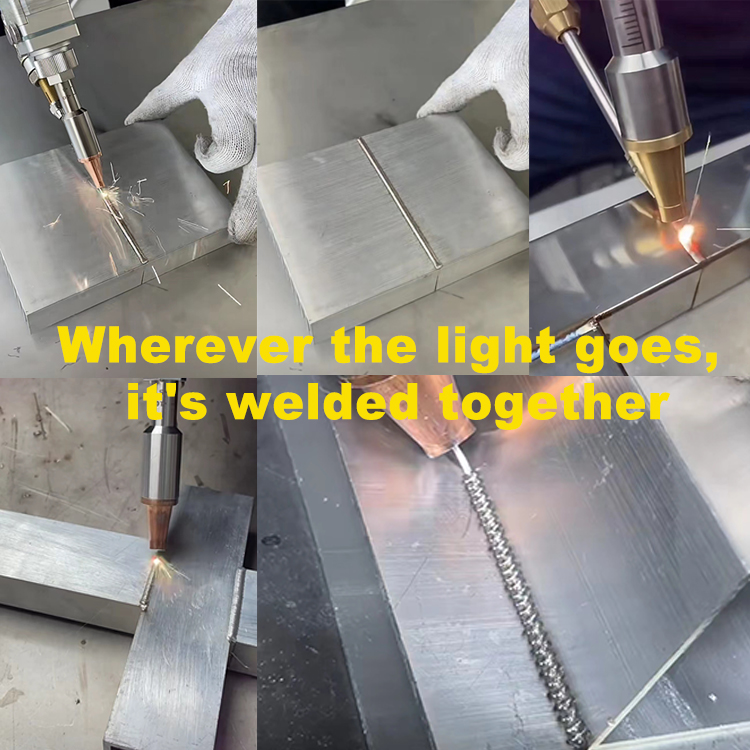The welding of ultra-thin materials is a delicate activity that requires a higher laser beam. This laser should have the characteristics of concentrated energy, small welding deformation, and good flexibility. If the equipment parameters are adjusted well, there will be no false welding or burn-through. The following introduces the application of laser welding machine in ultra-thin material welding.
Laser welding uses high-energy laser pulses to heat the material locally in a small area at high speed. The energy of laser radiation diffuses to the inside of the ultra-thin material through heat conduction, and the ultra-thin material is melted in a very short time to form a specific molten pool. And quickly cool and condense to connect the materials together. It is a new type of welding method. Laser welding is mainly aimed at the welding of ultra-thin materials and precision parts. It can realize spot welding, butt welding, lap welding, sealing welding, etc. It has a high aspect ratio, a small weld width, a small heat-affected zone, small deformation, fast welding speed, a smooth and beautiful weld, no post-welding treatment or only simple treatment, high weld quality, no pores, can be precisely controlled, small focusing spot, high positioning accuracy, and easy automation.

The main parameters that affect the quality of laser welding are welding current, pulse width, pulse frequency, etc., and their main effects are as follows:
1.As the current increases, the width of the weld increases, spatter gradually appears during the welding process, oxidation occurs on the weld surface, and there is a rough feeling.
2.As the pulse width increases, the width of the weld also increases. The change in pulse width has a significant impact on the welding effect of the stainless steel ultra-thin plate laser welding machine. A slight increase in the pulse width may cause the sample to be oxidized and burned through.
3.As the pulse frequency increases, the overlap rate of the weld points increases, and the weld width increases first and then remains basically unchanged. Under the microscope, the weld becomes smoother and more beautiful. However, when the pulse frequency increases to a certain value, the spatter during the welding process is serious, the seam becomes rough, and oxidation occurs on the upper and lower surfaces of the welded parts.
4.Positive defocus is suitable for laser welding of ultra-thin plate materials. Under the same defocus amount, the weld surface obtained by positive defocus laser welding is smoother and more beautiful than that of negative defocus. Wuhan Ruifeng Optoelectronics Laser is one of the earliest laser equipment manufacturers in China’s Optics Valley. It has 16 years of R&D and production experience and is ahead of its peers in technology and integration. Since its establishment, the company has always paid attention to the R&D of laser technology and the development needs of customers, and is committed to providing each customer with a complete material processing solution.

The application of laser welding machines in ultra-thin material welding, for laser welding of ultra-thin stainless steel materials, because the material is very thin, it is easy to vaporize and perforate. In order to obtain a continuous, non-burned weld, the key is to accurately control the parameters.
As modern manufacturing continues to pursue product miniaturization, lightweight and high performance, the application of ultra-thin materials is becoming more and more extensive. From precision parts of electronic equipment to high-performance components in the aerospace field, these ultra-thin materials bring many advantages to products while also bringing unprecedented challenges to the welding process. Traditional welding methods often find it difficult to meet the requirements of high precision, low heat impact and high-quality welding when facing ultra-thin materials. Laser welding machines, with their unique technical advantages, stand out in the field of ultra-thin material welding and become one of the key technologies to promote the development of modern manufacturing.


